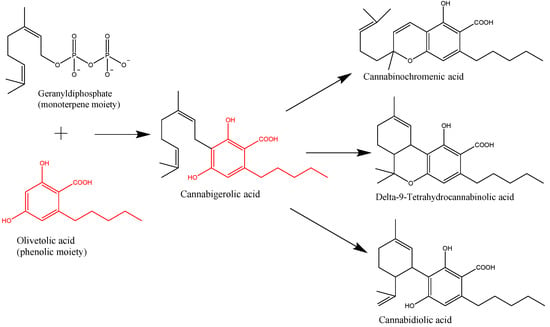
“Cannabis use for medicinal purposes was first documented in 2900 BC in China, when Emperor Shen Nong described benefit for rheumatism and malaria and later in Ancient Egyptian texts.
Discussion in medical journals, the mainstream and social media around the use of cannabis for medicinal and non-medicinal purposes has increased recently, especially following the legalisation of cannabis for recreational use in Canada and the UK government’s decision to make cannabis-based medicines (CBMs) available for prescription by doctors on the specialist register.
The actual, social and economic legitimisation of cannabis and its medicinal derivatives makes it likely increasing numbers of patients will present on this class of medicines. Perioperative physicians will require a sound understanding of their pharmacology and evidence base, and may wish to exploit this group of compounds for therapeutic purposes in the perioperative period.
The increasing availability of cannabis for both recreational and medicinal purposes means that anaesthetists will encounter an increasing number of patients taking cannabis-based medications. The existing evidence base is conflicted and incomplete regarding the indications, interactions and long-term effects of these substances.
Globally, most doctors have had little education regarding the pharmacology of cannabis-based medicines, despite the endocannabinoid system being one of the most widespread in the human body.
Much is unknown, and much is to be decided, including clarifying definitions and nomenclature, and therapeutic indications and dosing. Anaesthetists, Intensivists, Pain and Perioperative physicians will want to contribute to this evidence base and attempt to harness such therapeutic benefits in terms of pain relief and opiate-avoidance, anti-emesis and seizure control.
We present a summary of the pharmacology of cannabis-based medicines including anaesthetic interactions and implications, to assist colleagues encountering these medicines in clinical practice.”
https://www.ncbi.nlm.nih.gov/pubmed/31827774
“In summary, cannabinoids may improve pain relief as part of multi-modal approach. As the evidence base increases, CBMs could become part of the perioperative teams’ armamentarium to help provide an opiate sparing multimodal analgesia regime as well as having a role in the management of common post-operative complications such as nausea and vomiting.”
 “Marijuana generally refers to the dried mixture of leaves and flowers of the cannabis plant, and the term cannabis is a commonly used to refer to products derived from the Cannabis sativa L. plant. There has been an increasing interest in the potential medicinal use of cannabis to treat a variety of diseases and conditions. This review will provide the latest evidence regarding the medical risks and potential therapeutic benefits of cannabis in managing patients with sleep disorders or those with other medical conditions who commonly suffer with sleep disturbance as an associated comorbidity. Published data regarding the effects of cannabis compounds on sleep in the general population, as well as in patients with insomnia, chronic pain, posttraumatic stress disorder, and other neurological conditions, will be presented. Current trends for marijuana use and its effects on the economy and the implications that those trends and effects have on future research into medical cannabis are also presented.”
“Marijuana generally refers to the dried mixture of leaves and flowers of the cannabis plant, and the term cannabis is a commonly used to refer to products derived from the Cannabis sativa L. plant. There has been an increasing interest in the potential medicinal use of cannabis to treat a variety of diseases and conditions. This review will provide the latest evidence regarding the medical risks and potential therapeutic benefits of cannabis in managing patients with sleep disorders or those with other medical conditions who commonly suffer with sleep disturbance as an associated comorbidity. Published data regarding the effects of cannabis compounds on sleep in the general population, as well as in patients with insomnia, chronic pain, posttraumatic stress disorder, and other neurological conditions, will be presented. Current trends for marijuana use and its effects on the economy and the implications that those trends and effects have on future research into medical cannabis are also presented.”
 “The butyl homologues of Δ9-tetrahydrocannabinol, Δ9-tetrahydrocannabutol (Δ9-THCB), and
“The butyl homologues of Δ9-tetrahydrocannabinol, Δ9-tetrahydrocannabutol (Δ9-THCB), and  “The increasing medicinal use of
“The increasing medicinal use of 
 “Despite improvements in medical care, patients with advanced cancer still experience substantial symptom distress. There is increasing interest in the use of medicinal
“Despite improvements in medical care, patients with advanced cancer still experience substantial symptom distress. There is increasing interest in the use of medicinal  “Epilepsy is a neurological disorder that affects approximately 50 million people worldwide.
“Epilepsy is a neurological disorder that affects approximately 50 million people worldwide. “There is considerable interest in the use of cannabinoids for symptom control in palliative care, but there is little high-quality evidence to guide clinical practice.
“There is considerable interest in the use of cannabinoids for symptom control in palliative care, but there is little high-quality evidence to guide clinical practice.